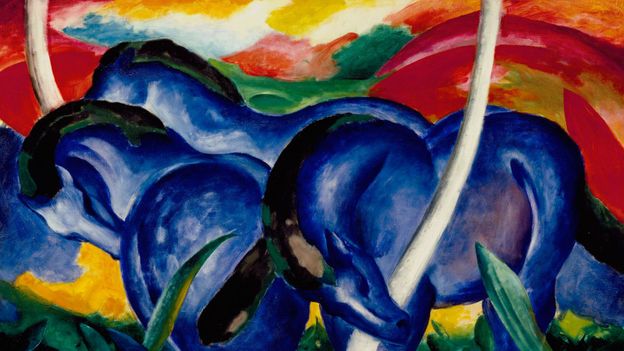The masterpieces stolen by the Nazis


Perhaps it’s no wonder that walking through the galleries, I often felt immersed in a world turned topsy-turvy by theft, never more so than as I gazed at the vitrines of Jewish ritual objects – Kiddush cups, Sabbath candle sticks, Torah pointers, and other holy objects – lined up alongside each other as if for a massive warehouse sale, with no community, perhaps no person, alive to claim them. That is, until the surviving Jewish communities outside of Europe – including the Jewish Museum in New York – stepped in after the war to help rescue the many orphaned objects. All the ceremonial works on display in this exhibition found their own afterlives as part of the Museum’s permanent collection, a part of that massive effort to salvage the remains of European Jewish culture.
Looking forward
That the legacy of stolen art and cultural objects also leaves ghostly afterlives in subsequent generations is the subject of the final section of the exhibition: new works commissioned by four young contemporary artists living in Israel, Berlin, and Brooklyn: Maria Eichhorn, Hadar Gad, Dor Guez, and Lisa Oppenheim.
Each of these artists approaches this history from a different perspective. Conceptual artist Eichhorn immerses us in the very work of recovering, locating, and returning looted objects. She does so by surrounding us with actual cases of archival papers, ledgers, reports, books, and on and on, all needed to verify, certify, analyse, authenticate each artifact, each item. Further intensifying the sense of being thrust into the work itself is the audio backdrop of an ongoing, non-stop recording of the voice of philosopher Hannah Arendt. She is reading various memos she wrote in her capacity as a director of the agency tasked with the sad but urgent goal of sorting through the massive crates of materials that were recovered.








